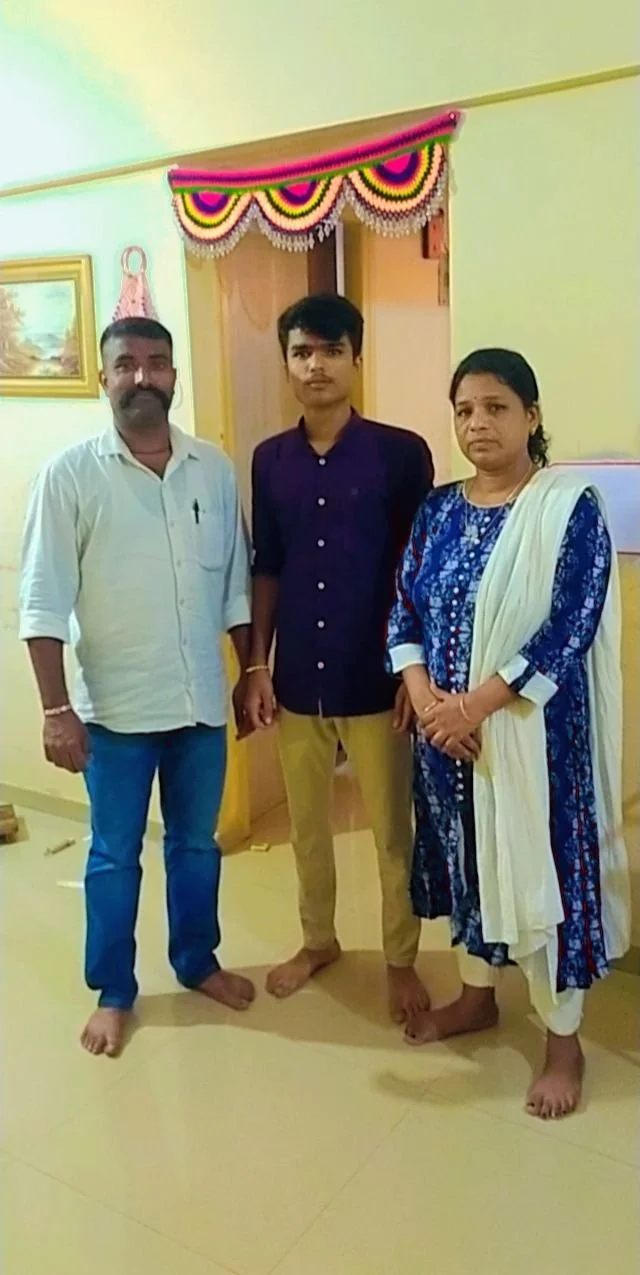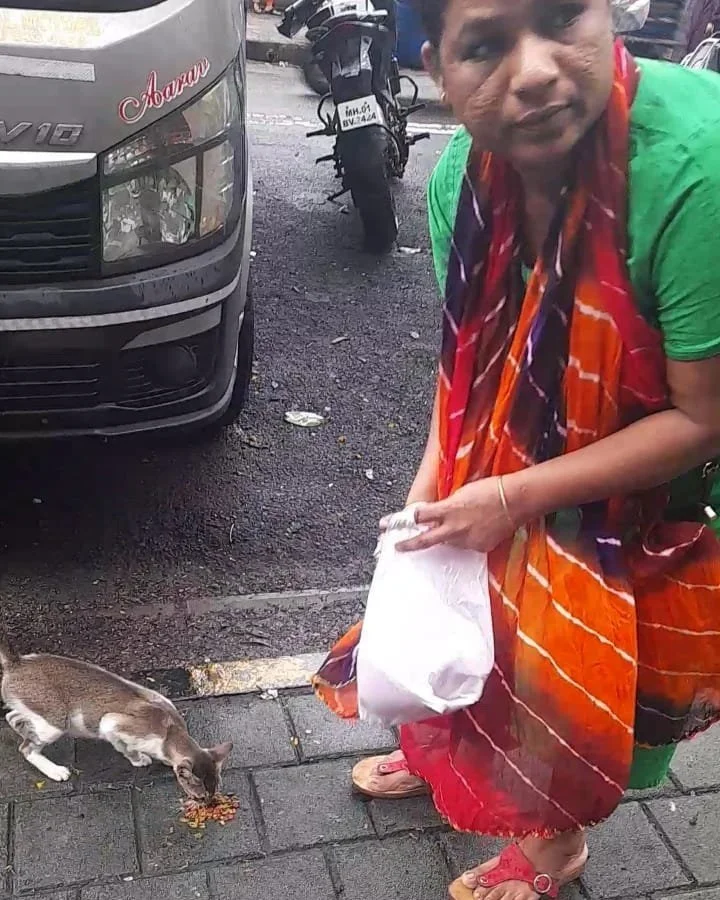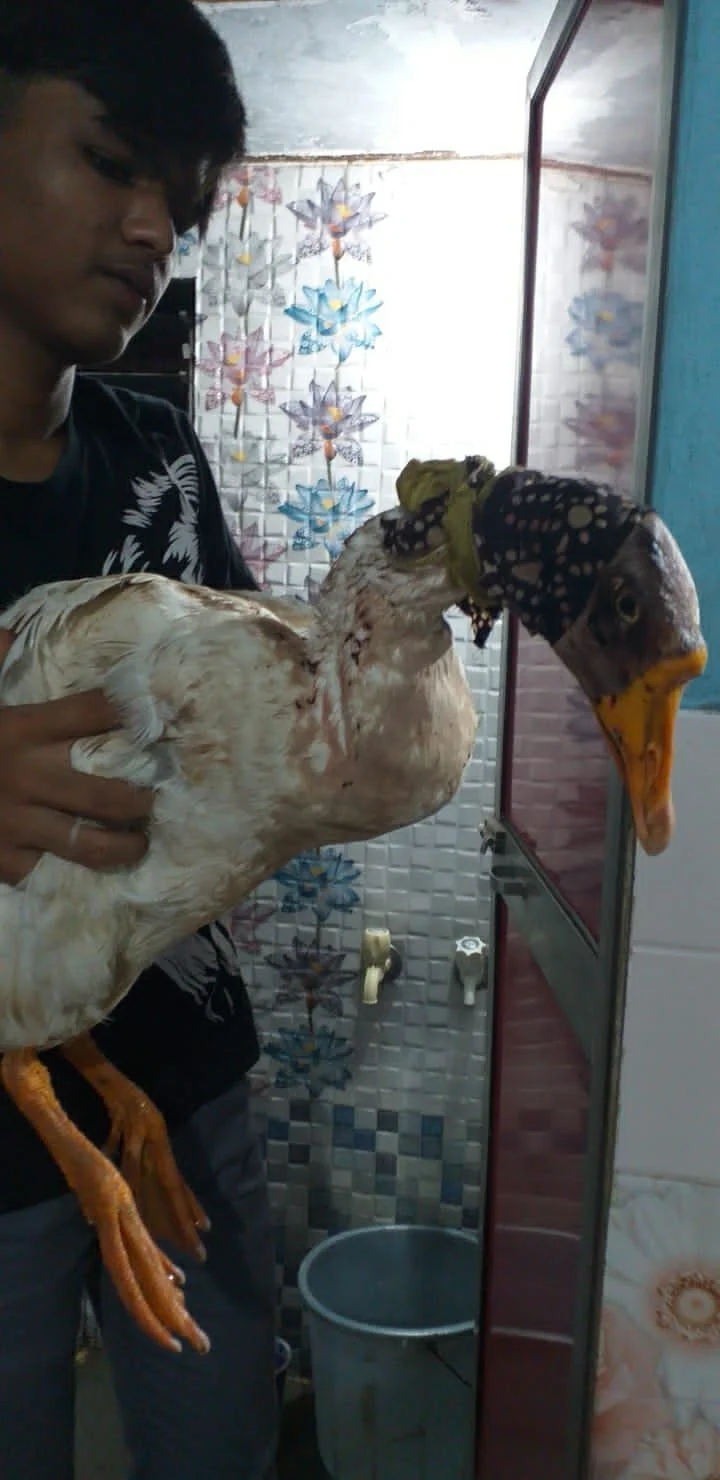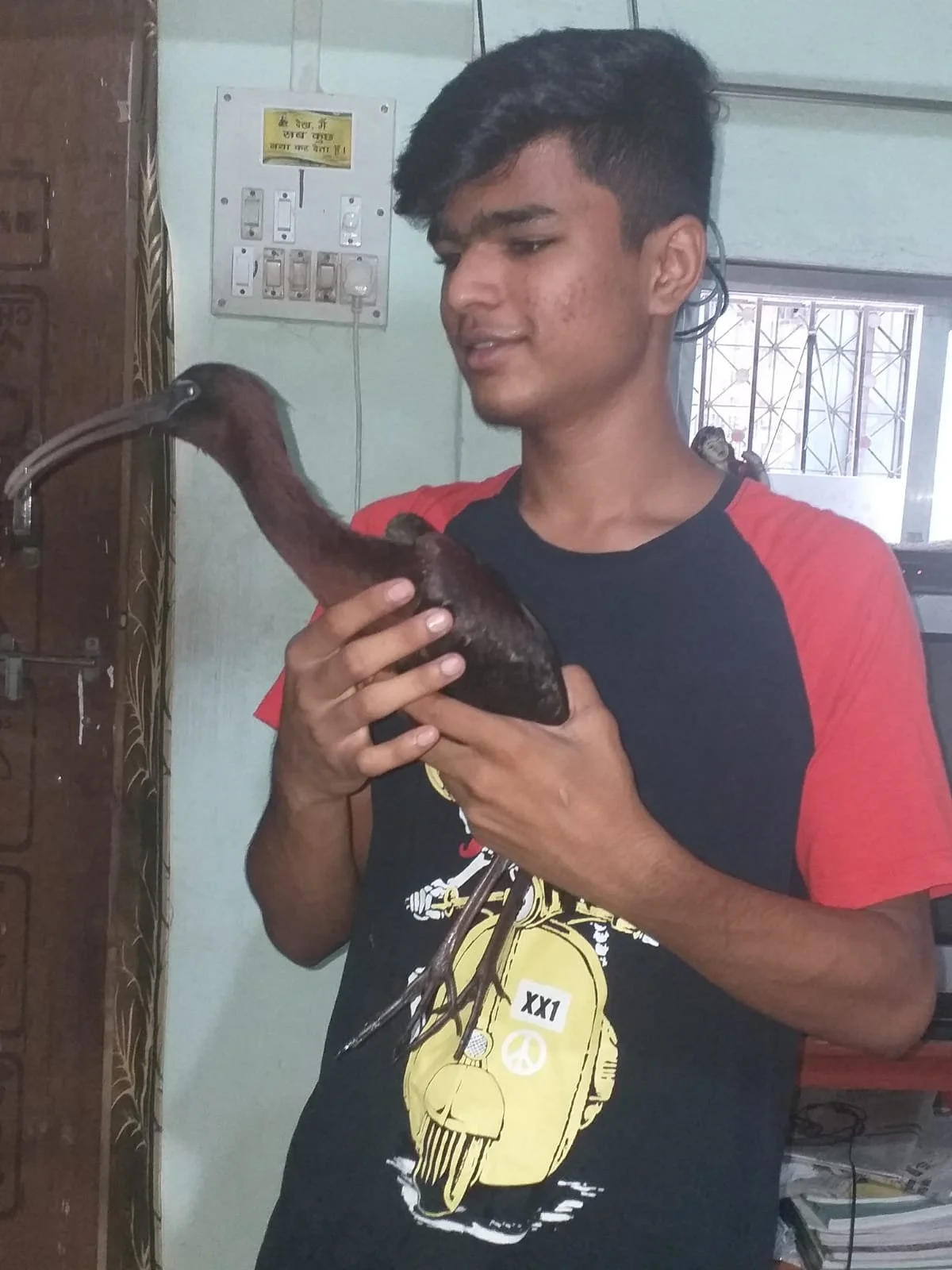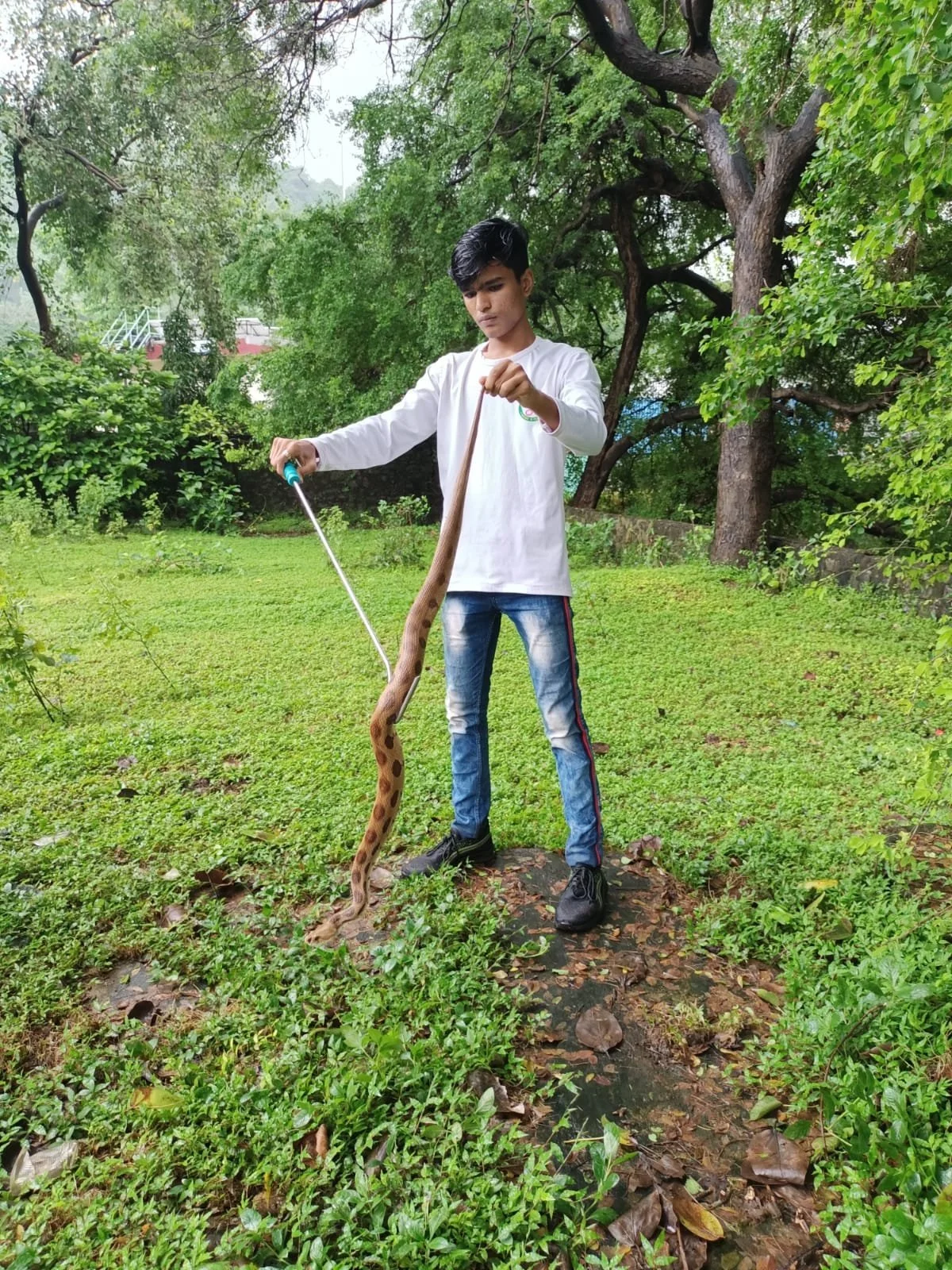Sept 22 | By Beatrice Rao
An Interview with the Acharyas
How often have you met a 20-year-old who inspires you?
Meet Sujeet Acharya, passionate about rescuing animals and training to be a cop.
In fact, stretch out your arms and welcome the whole family.
His dad, Raja, a driver, who started it all by bringing in a kitten who had been injured in an accident.
His mother, Rajashree, a qualified nurse, who gave up working full time five years ago, because she had to do nights and had no one to look after her growing son.
Yardena Kurulkar, co-founder of Doing My Bit Foundation and I met the Acharyas and chatted about how they got into rescuing animals. How the lockdown opened their eyes to the plight of animals, from stray dogs and cats to wild animals like monkeys and deer. We laughed nervously when Rajashree recounted how she got a fright of her life when the snake Sujeet had rescued escaped from its bag and coiled up on her bed. We cried when we saw pictures of how a pet monkey’s collar had torn into his flesh because his owner had kept him chained for five years.
“It all started when my husband’s madam rescued a tiny kitten from the streets. She kept the kitten in the parking lot and was heart-broken when someone’s vehicle ran over it and injured it badly,” starts Rajashree. Sujeet fished out his mobile and showed us pictures of the wounded kitten. “The madam asked my husband to somehow save the kitten’s life. My husband brought the kitten home saying, ‘You are a nurse, you must do your best.’ So I gave it mild Crocin, UV light and fed her soft rice and fish with my own hands. I also dewormed her and within a week, she was fine. We vaccinated her and named her Mau. And that’s how our love for rescuing began.”
Rajashree feeding her cats
Rajashree says that her nurse’s training has been very helpful. She has helped remove loads of maggots from a stray dog whose ear was infected. She washed it with Betadine solution and removed the maggots with forceps. She did it daily for 8-10 days and saw that the dog lived for almost seven years.
She recollects how someone had dumped a Persian cat on the road; he was probably a small-time breeder, she says, who did not envisage how expensive it would be to care of a Persian. She named it Gauri and when she gave birth to the cutest kittens, they put them up for adoption. Gauri delivered again; this time 10 little kittens, but she had to be admitted to the Parel Animal Hospital, Mumbai, because the last kitten had died in her birth canal and she required immediate surgery. It was challenging to look after the baby kittens. Rajashree had to bottle-feed them when their mother was in hospital. She says, “For 15 days, I had to feed them every hour. For 15 days I couldn’t even step out of my house. But it was such a joy to see them do well and eventually find happy, loving homes.” The kittens were adopted by people who worked in the same office where her husband, Raja is employed.
When we asked Sujeet what prompted his passion, he said, “I have always cared deeply for animals but was not too much into rescue work. All this changed with the lockdown. We used to live in Bhandup earlier, before we moved to Prabhadevi. During the lockdown, the condition of the strays was pitiful, so mum started feeding the cats.” His mother interjects, “Chicken became cheaper during the lockdown, so I would buy chicken and feed the dogs too. The neighbours objected but we managed to convince them that it was important to feed the hungry animals who had nowhere to go.”
A swan bitten by dogs in Sujeet’s care
“Not only strays were hungry but we noticed that wild animals started coming into the city area. Because everything was so quiet, they just thought it was an extension of the forest. There was a deer, and monkeys too. The monkeys were used to being fed by tourists, so when all travel stopped, their food supply stopped. There was a monkey in Shivaji Nagar, Govandi, who had become so aggressive, he used to enter homes through the window and open the fridge and raid it. We managed to calm him and handed him over to the NGO for release back in the wild,” says Sujeet.
While mum is a cat person, Sujeet loves the challenge of rescuing snakes. “After completing my 10th standard, I began training with a rescue group and learnt to catch stray snakes. One day, I rescued two snakes from Deonar but had to leave home in a hurry. I tied them in two separate bags and left home before I could inform mum about the rescue. She wasn’t in at that time.”
“When I got home, I was startled. Utensils had fallen from the top shelves. I wondered, what happened? I lifted the two bags that were on the floor. One felt heavy. I guessed it was a snake. The other bag was surprisingly light. I presumed that the snake had escaped through a small hole in the bag, and it was somewhere around the house. I called up Sujeet and he told me to shut all the windows and the main door. I looked high and low but I still couldn’t spot the snake. Scared and tired, I lay down to rest. Imagine my fright when I saw the snake coiled on the bed,” says Rajashree.
Sujeet showed us pictures of the rescued snakes. “They were rat snakes, a male and female. Rat snakes are called, ‘the farmer’s friend’. They are non-venomous.” Thanks to the course he attended, Sujeet can distinguish between venomous and non-venomous ones. He educates us that the cobra and the Russel’s Viper are venomous while the vine snake which is green in colour is semi-venomous. “Today, if a snake has to be rescued, they call me,” he says with pride.
Glossy Ibis just before it’s release
Sujeet rescuing a Russel Viper
The captured snakes are given to an NGO to be released in the wild, but before that, Sujeet makes sure that he educates the onlookers on the type of snake rescued, whether it is venomous or not. “I handle the non-venomous snakes by catching it in the middle whereas the venomous ones have to be caught by the tail. When they move to strike, I twist the tail slightly. This inhibits them from biting. Venomous ones are slower and easier to catch. The non-venomous are tougher, and yes, I have been bitten quite a few times,” says the brave lad. His mom confessed that every time he gets a call to rescue a snake, she worries herself to death. Once, fed up with her entreaties to stop the snake rescue work, he ran away from home and came back only after a week, after she promised to back off.
Sujeet’s eyes light up when he speaks about his rescues. When Cyclone Tauktae hit Mumbai on 17th May, 2021 and several trees were uprooted, he helped rescue and rehabilitate almost 30 kites. He’s helped nurse a Glossy ibis, a migratory bird back to health, by keeping it in a tub at his home, and feeding it live fish. He’s rescued turtles, squirrels and a monitor lizard. He’s helped a pigeon (who didn’t have her top beak) survive by feeding it. He has even assisted in the rescue of a 4 ft crocodile at Bhandup Pumping station.
Currently training to be a cop at an academy in Shivaji Park, Mumbai, Sujeet makes sure that before his class starts, he packs a big tiffin for his stray friends. He buys the chicken from the local meat shop, and cooks it with rice and turmeric. If he spots a pregnant stray, he makes sure that she gets a more nutritious diet.
Sujeet wishes that more pet owners would open their homes to strays. “I would love to take care of more animals but my home in Mumbai is small. I wish I could get better equipment and cages to keep the wounded animals because they get aggressive when they are hurt. Cages will also help me to quarantine the sick animals so that the disease doesn’t spread,” says Sujeet.
Don’t we wish Mumbai, nay, our country had a few more Acharyas? Sensitive to the plight of the ones who have no names, no meals to look forward to, no place to rest without getting shooed away. And sometimes, even beaten to death.
Sujeet feeding a pigeon with a broken upper beak

